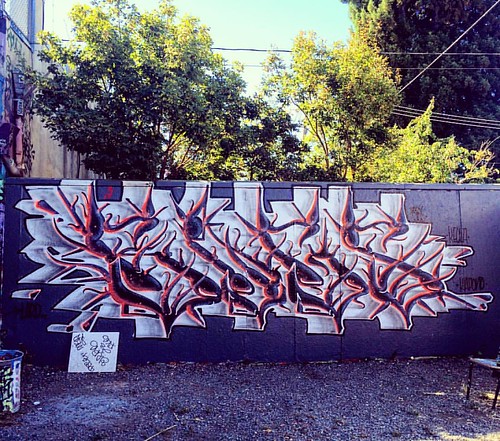in meiosis and DNA synthesis were positively related to the LncPHx2-depleted regenerating liver gene set (S4 Fig). Interestingly we also located that genes downregulated in cancers, were also downregulated in regenerating livers depleted of LncPHx2 (S5 Fig). Comparison with the oncogenic signature datasets in MSigDB revealed that the genes upregulated by LncPHx2-depletion in regenerating liver is also upregulated when tumour suppressor retinoblastoma protein (RB), retinoblastoma-like 1 (RBL1), and breast cancer 1 (BRCA1) had been depleted (S5 Fig). These correlations recommend that LncPHx2 may well function as a tumour suppressor. To test this hypothesis, we employed a diethylnitrosamine (DEN)-induced mouse hepatocellular carcinoma (HCC) model, considering the fact that genes downregulated in DEN-induced HCC were among the top rated negatively related gene datasets towards the LncPHx2-depleted regenerating liver gene set (S5 Fig). Moreover, we TPO agonist 1 discovered that LncPHx2 expression was moderately upregulated in tumours from mice with DEN-induced HCC in comparison to levels in adjacent tissue (S5 Fig). DEN-treated mice have been injected with PBS, handle ASO or LncPHx2_ASO1 subcutaneously (S5 Fig). LncPHx2 expression in tumour cells was considerably decreased in mice treated with LncPHx2_ASO1 in comparison to levels in tumour cells from control mice (S5 Fig). The tumour volumes, even so, have been indistinguishable involving these from LncPHx2_ASO1-treated mice and PBS- and control ASO-treated mice (S5 Fig). These outcomes indicate that the depletion of LncPHx2 alone isn’t sufficient to augment tumour progression inside the DEN-induced HCC mouse model.
Cytoplasmic lncRNAs have been shown to regulate gene expression by means of RNA-RNA interactions [34]. To investigate regardless of whether LncPHx2 straight interacts with mRNAs, we adapted a previously described RNA interactome strategy [34]. Biotinylated DNA probes targeting LncPHx2 were utilised to precipitate endogenous LncPHx2 and associated RNAs from Hepa1-6 cells. Applying this system, we recovered more than 95% of endogenous LncPHx2 RNAs (Fig 5A). The related RNAs had  been sequenced and 415 unique transcripts have been identified, suggesting that LncPHx2 is linked to several RNAs (S3 Table). The sequences of related RNA fragments have been subjected to a de novo motif search applying MEME (Motif-based sequence evaluation tools) [35]. We identified a 21-nucleotide motif that was strongly enriched in LncPHx2-interacting RNAs (Fig 5B). Interestingly, this motif is present in tandem in each sense and antisense directions in the LncPHx2 RNA itself (Fig 5B). We found that mRNAs encoding MCM2, MCM3 and MCMC7, which were upregulated upon LncPHx2-depletion in regenerating livers, had been linked to LncPHx2 in Hepa1-6 cells. The MCM2-7 proteins are essential elements of your DNA 17764671 pre-replication complex and are necessary for initiation of eukaryotic genome replication [41]. Each gain- and loss-of-function analyses demonstrated that MCMs promote cell proliferation [42]. The LncPHx2 RNA-interacting motif is present in these three Mcm mRNAs with high significance as evaluated by MAST (Motif-based sequence evaluation tools)[36] (Fig 5B). Together with the exception of those mRNAs and these listed in S4 Table, we did not observe substantial overlap in between the mRNAs that are connected with LncPHx2 in Hepa1-6 cells and these that are differentially expressed upon LncPHx2-depletion for the duration of liver regeneration. The systems in which these experiments have been performed (an in vitro cell line vs. regenerating liver)
been sequenced and 415 unique transcripts have been identified, suggesting that LncPHx2 is linked to several RNAs (S3 Table). The sequences of related RNA fragments have been subjected to a de novo motif search applying MEME (Motif-based sequence evaluation tools) [35]. We identified a 21-nucleotide motif that was strongly enriched in LncPHx2-interacting RNAs (Fig 5B). Interestingly, this motif is present in tandem in each sense and antisense directions in the LncPHx2 RNA itself (Fig 5B). We found that mRNAs encoding MCM2, MCM3 and MCMC7, which were upregulated upon LncPHx2-depletion in regenerating livers, had been linked to LncPHx2 in Hepa1-6 cells. The MCM2-7 proteins are essential elements of your DNA 17764671 pre-replication complex and are necessary for initiation of eukaryotic genome replication [41]. Each gain- and loss-of-function analyses demonstrated that MCMs promote cell proliferation [42]. The LncPHx2 RNA-interacting motif is present in these three Mcm mRNAs with high significance as evaluated by MAST (Motif-based sequence evaluation tools)[36] (Fig 5B). Together with the exception of those mRNAs and these listed in S4 Table, we did not observe substantial overlap in between the mRNAs that are connected with LncPHx2 in Hepa1-6 cells and these that are differentially expressed upon LncPHx2-depletion for the duration of liver regeneration. The systems in which these experiments have been performed (an in vitro cell line vs. regenerating liver)
